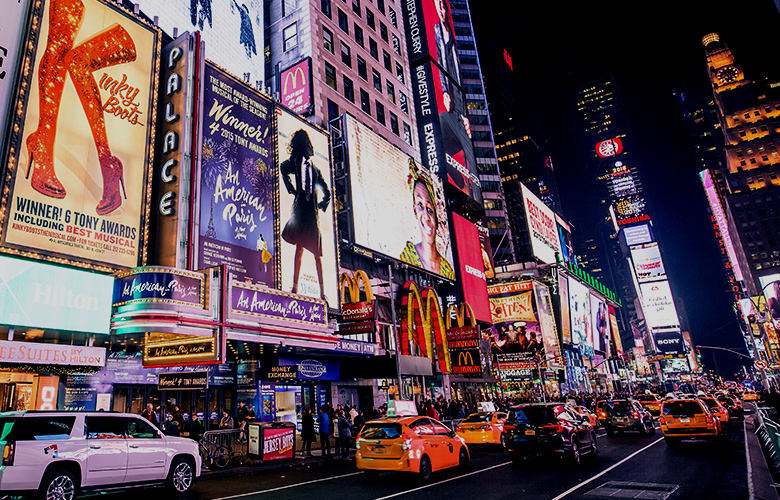
There is something to be said about the cost of Broadway tickets. I had the humbling experience of attempting to buy my five-year old cousin tickets to what would be her first Broadway show, Frozen, and realizing the venture would cost me over $500.00.
Theatre should be accessible to as many people as possible, and yet it is becoming an elite activity unless you’re willing to shell out hundreds of dollars or, the 20-something’s alternative, wait in a line for six hours on the street in the hopes of achieving standing-room status. For those of us who want to see theatre regularly and experience the new shows of the season, it is a problem.
It costs a lot of money to produce a show and see it through a solid run, and therefore ticket prices are high. However, these shows have no problem raising ticket prices because they know the people will pay and, eventually, they’ll bite the bullet and come. Eventually, many of my friends gave up entering Broadway lotteries every single day and shelled out half their week’s paycheck to be in “the room where it happens.”
There are, of course, alternatives to paying full price for a ticket, such as the rare promo code(s), TodayTix, the TKTS booth, student rush, standing room and cancellation lines.
However, not all people who want to go to the theatre are able to take advantage of these options. For example, back in October, my friends and I woke up at 3:00 am and sat outside on the street for almost seven hours waiting to buy discounted, same-night tickets to Come From Away. While this was worth it and the show was magnificent, I cannot imagine taking my little cousin on such an adventure, nor my parents or grandparents attempting that. Therefore, the end result would be them not seeing the show at all which is a shame.
I am (obviously) not the first person to ponder this problem. The New York Times published an article in May of 2017, entitled “High Ticket Prices Are Fueling the Broadway Boom” by Michael Paulson.
Paulson’s article revealed that the increase in Broadway’s profits are a result of the high cost of tickets, not an influx of attendees.
Hamilton, which continues to play to sold-out houses 21 months after opening, led the way, setting a record box-office price of $849 for many orchestra seats, in an effort to recapture profits being lost to resellers. Hello, Dolly!, starring Bette Midler, has a top ticket of $748; Sunday in the Park With George, starring Jake Gyllenhaal, was charging $499 for its most sought-after seats; and The Book of Mormon tops out at $477.
“The new musicals are a touch less aggressive with pricing as they build their audiences: Dear Evan Hansen, about a high school student whose life is changed by the suicide of a classmate, is selling its best seats for $397, while Come From Away, about a Canadian town that welcomed diverted airline flights after the Sept. 11 attacks, has a top price of $297,” said Michael Paulson.
The New York Times article presented both sides of the argument, some claiming that prices had to remain higher to diminish the presence of scalpers, while others denounced the incredibly high prices, claiming that new audiences were the only way to ensure long-term growth and sustainability.
A quote in The New York Times article stated it best:
“I do wonder if people are starting to think every seat in the theater is $500,” said Theodore S. Chapin, President of the Rodgers & Hammerstein Organization. “I know more and more people who feel as if, ‘I can’t afford to go to the theater anymore,’ and I hope we don’t wake up one day to find a tradition is diminished,” Chaplin said.
Angels In America: The Great Work Begins
A Tale Of Two Parts: Broadway’s Newest Model


Mena Buscetto’s 18+ of theatrical experience have enhanced her love of storytelling and expression through the written word. Mena currently lives in Manhattan and holds a B.A. in English from Marist College and a M.A.T. from Sacred Heart University. She also attended the Columbia Publishing Course in 2017 where she learned about all aspects of the publishing industry and strengthened her own writing and editing skills. Throughout her life, Mena has been fortunate enough to participate in all aspects of theater, including performance, box office management house management, props mastering, and directing. Mena has most recently performed in "How the Other Half Loves", "Cabaret", "A Chorus Line" and "Godspell". Mena has also been dancing since the age of two and has studied ballet, jazz, tap, musical theatre and lyrical dance. In her free time, she enjoys seeing Broadway shows and taking classes at Broadway Dance Center. Through TheatreArtLife, Mena hopes to contribute to a community of creative professionals who share her passion for the arts.
Read Full Profile© 2021 TheatreArtLife. All rights reserved.

Thank you so much for reading, but you have now reached your free article limit for this month.
Our contributors are currently writing more articles for you to enjoy.
To keep reading, all you have to do is become a subscriber and then you can read unlimited articles anytime.
Your investment will help us continue to ignite connections across the globe in live entertainment and build this community for industry professionals.